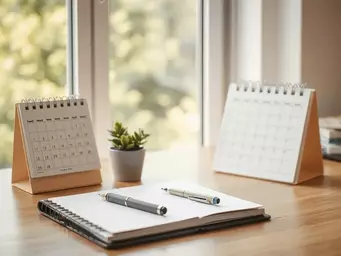2 Weeks: Subtle Shifts
Begin to notice subtle shifts in behavior. Some days may be challenging, but others will show promise. Celebrate early wins!
Consider this: every small step you take toward self-improvement is a victory in its own right. In a world where change often feels daunting, understanding the impact of micro-changes can transform your approach to personal growth. Let’s explore how these tiny adjustments can pave the way for lasting habits.
This visual illustrates the expected timeline for micro-changes to become stable habits and their cumulative impact on personal growth.
Begin to notice subtle shifts in behavior. Some days may be challenging, but others will show promise. Celebrate early wins!
Micro-changes start feeling more integrated into your routine. You may even look forward to these new habits as momentum builds.
Many individuals report these micro-habits becoming second nature. A solid foundation for lasting change is built.
Continued consistency leads to long-term personal growth and emotional wellness. Progress isn’t always linear, but every step counts.
Have you ever felt overwhelmed by the thought of making significant changes in your life? You're not alone! At Become Better Self, we believe that embracing the power of micro-changes can lead to lasting transformation. In this section, we’ll explore what micro-changes and micro-habits really mean, and how they can fit into your daily life.
Micro-changes are small, incremental adjustments we make in our daily routines. They may appear insignificant at first, but their cumulative effect can lead to profound improvements over time. For example:
These tiny steps can make a huge difference! Micro-habits, on the other hand, are specific behaviors that stem from these micro-changes. They are easy to implement and can seamlessly fit into your life—like doing a few stretches while waiting for your coffee to brew.
In simple terms, micro-habits are small actions that lead to significant results. For instance, if your goal is to read more, starting with just one page a day can eventually lead to finishing an entire book each month! At Become Better Self, we encourage you to celebrate these small victories, as they pave the way for larger transformations.
It's essential to differentiate between these concepts. While micro-changes are the building blocks, tiny habits are specific actions you take regularly, and habit stacking involves linking a new habit to an existing one. Here's a quick breakdown:
By understanding these distinctions, you can create a personalized routine that works for you. Remember, at Become Better Self, we're here to support you on this journey toward growth and emotional wellness!
The beauty of micro-changes lies in their simplicity and effectiveness. Evidence-backed strategies reveal why they can be more impactful than overwhelming goals. Let's delve into the science behind this approach.
Central to habit formation is the habit loop, which consists of three essential components: a cue, a routine, and a reward. Each micro-change you make can fit into this loop:
By structuring your changes this way, you reinforce positive behaviors and make them stick!
BJ Fogg’s Tiny Habits method emphasizes the importance of simplicity. The idea is to make your new habit so small that it feels easy to do. For instance, if you want to floss more, start by flossing just one tooth! This approach eliminates the feeling of pressure and makes it easier to build momentum.
James Clear, author of "Atomic Habits," advocates for the 1% rule, which posits that small daily improvements can lead to significant growth over time. By stacking habits together, you can create a powerful chain of positive actions. For example, if you want to integrate reading into your life, read one page after drinking your morning coffee.
Understanding the psychology behind habits can be a game-changer. Motivation and willpower are key players, but they can be fleeting. Instead of relying solely on willpower, focus on creating an environment that supports your micro-changes. At Become Better Self, we aim to equip you with insights that enhance your resilience and emotional wellness.
The brain responds best to repetition. When you consistently perform a micro-habit, it becomes ingrained, making it easier to stick with over time. Think of it like learning to ride a bike: the more you practice, the more natural it becomes! Embrace the journey, and remember that every small effort counts.
Start small and be consistent! When implementing micro-changes, aim for actions that require minimal effort. The key is to choose habits that seamlessly fit into your existing routine, making them easier to maintain. For example, if you want to drink more water, keep a glass by your bedside to remind you first thing in the morning. Consistency will help these small changes become automatic over time!
As we embark on our journey of personal growth through micro-changes, it's essential to understand what the first few weeks may look like. This isn't just about setting goals; it's about nurturing habits that will support our emotional wellness and overall development. At Become Better Self, I've witnessed countless individuals find success through these small adjustments, and I want to share some insights with you!
In the initial weeks, you might experience some fluctuations in your progress. Here's a quick breakdown of what to expect:
As you progress, remember that each small step contributes to your overall transformation. It’s okay to adjust your expectations along the way—progress isn’t always linear!
Recognizing when a micro-change has solidified into a stable habit is crucial for maintaining momentum. Here are some signs to look out for:
Once you notice these signs, it's time to celebrate! Celebrating progress, no matter how small, reinforces positive behavior. At Become Better Self, we encourage you to take a moment to acknowledge your achievements. It could be as simple as treating yourself to a favorite snack, sharing your success with a friend, or journaling about your experience. These celebrations will remind you that every step counts on your journey toward a better self!
Now that you have a clearer picture of what to expect, let’s move on to creating a personalized micro-change plan tailored to your goals. I believe having a structured approach can significantly enhance your chances of success in this journey.
Crafting a one-page micro-change plan is a straightforward yet powerful exercise. Here are the steps to get started:
By having this plan in front of you, it becomes easier to stay focused and accountable. And remember, this is a living document! Feel free to revise it as your journey unfolds.
Incorporating a few follow-up actions can further solidify your commitment to micro-changes. Consider these suggestions:
These actions create an environment of support and continuous improvement, helping you stay aligned with your goals.
To make your journey even easier, we’ve developed a range of free resources on Become Better Self. These include downloadable habit trackers and templates designed specifically to help you implement and monitor your micro-changes. Utilizing these tools can streamline your progress and make the process feel more rewarding!
Don’t hesitate to explore these resources and incorporate them into your plan right away. The right tools can make all the difference in your personal growth journey.
As you navigate the world of micro-changes, you might have some lingering questions. Let’s address a few common inquiries that can help clarify your path forward!
Absolutely! Micro-changes are effective even for larger aspirations. By breaking down your significant goals into bite-sized actions, you can achieve lasting results without feeling overwhelmed.
While there's no one-size-fits-all answer, many individuals find that it takes about 21 to 66 days for a behavior to become automatic. Remember, consistency is key!
Micro-changes can complement therapy or coaching but shouldn’t replace them. They are powerful tools for personal growth, particularly when used alongside professional guidance.
Incremental growth fosters a mindset of continuous improvement. By focusing on small, achievable changes, you build confidence and resilience, making it easier to pursue larger goals over time.
Now that you have an understanding of what to expect and how to plan, I invite you to take action! Choose one micro-change to try today. Whether it’s drinking an extra glass of water, taking a five-minute stretch break, or setting aside time for daily reflection, every step matters.
Once you've chosen your micro-change, share your experience with the Become Better Self community! You can comment on our blog or reach out via email. Your insights could inspire others on their journeys.
In our community, we truly believe that sharing experiences amplifies growth. Seeing how others navigate their micro-changes can provide motivation and insight, making it easier for you to stick to your own goals. Let's encourage each other as we strive to become better versions of ourselves!
Here is a quick recap of the important points discussed in the article:

 Consider this: what if each small change you implement can lead to substantial improvements in your
Consider this: what if each small change you implement can lead to substantial improvements in your
 What if the key to unlocking your potential lies in the community you surround yourself with? Person
What if the key to unlocking your potential lies in the community you surround yourself with? Person
 Consider this: every small step you take toward self-improvement is a victory in its own right. In a
Consider this: every small step you take toward self-improvement is a victory in its own right. In a
 Consider this: what if every challenge you face is an opportunity for growth? Adopting a growth mind
Consider this: what if every challenge you face is an opportunity for growth? Adopting a growth mind